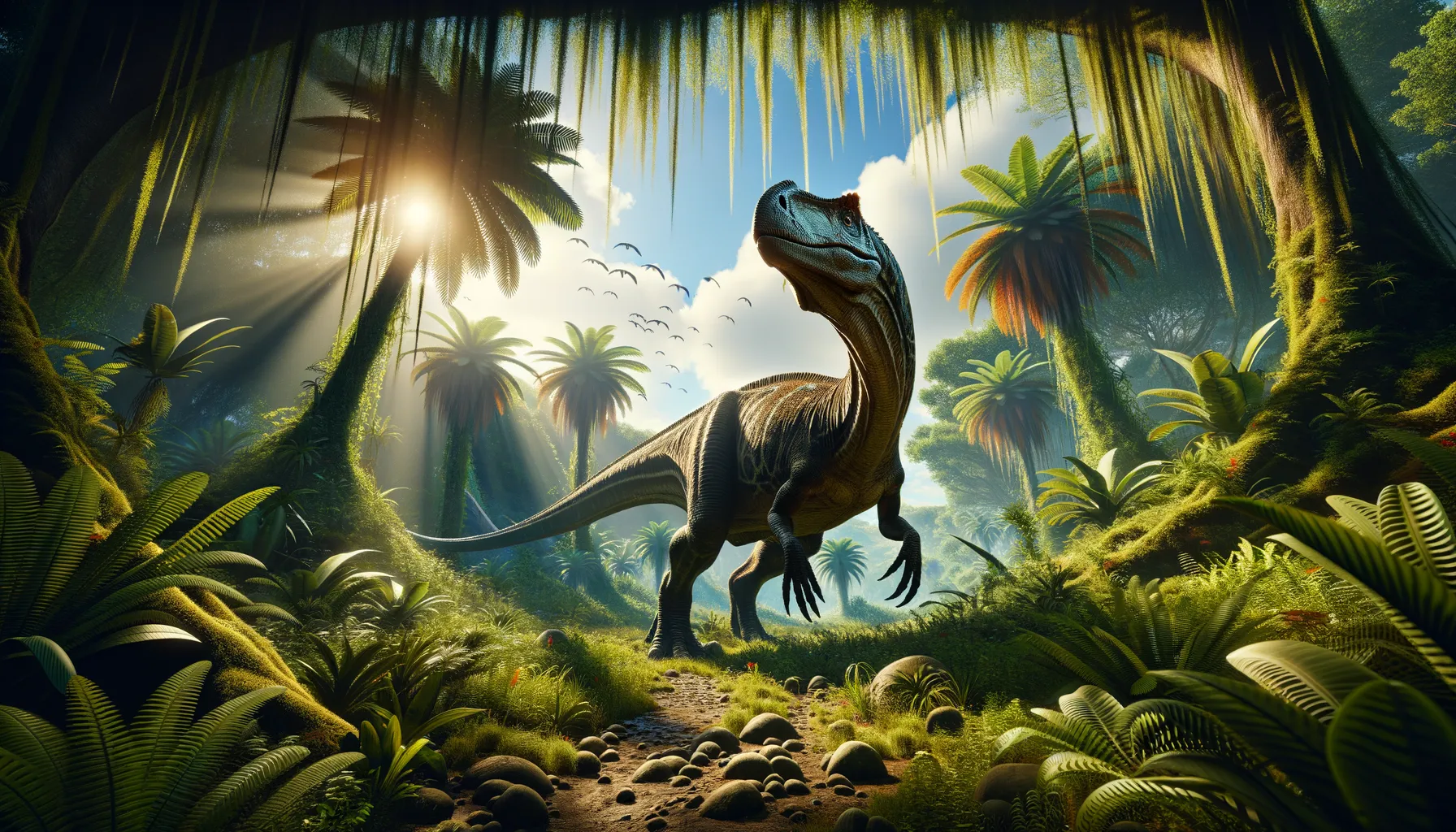
Tanystrosuchus
The Long-Necked Triassic Wonder!
Period
Triassic
Length
About 5 to 7 meters long.
Height
Roughly 2 to 3 meters tall.
Weight
Approximately 300 to 400 kilograms.
Tanystrosuchus was a long-necked reptile from the Triassic period, notable for its peculiar body structure. With a lengthy neck and relatively small skull, it dominated its habitat as a unique predator. The animal exhibited an unusual silhouette that set it apart from its contemporaries, giving it an advantage in niche ecosystems.
Diet
Tanystrosuchus was carnivorous, likely preying on small to medium-sized animals. Its diet probably included fish, as well as smaller land and water animals.
Hunting
Using its long neck, Tanystrosuchus may have been an ambush predator, waiting in concealment before quickly striking at unsuspecting prey. Its hunting strategy may have exploited its reach rather than speed.
Environmental challenges
Living during the Triassic period, Tanystrosuchus faced climatic fluctuations that affected its wetland and terrestrial habitats. The changing landscapes may have influenced its prey availability, forcing it to adapt its diet and hunting techniques. It also competed with other predators, potentially leading to territorial disputes.
Speed
Moderate, likely on the slower side due to its build.
Lifespan
Estimated around 10 to 20 years.
First discovery
Identified from European fossil findings in the 20th century.
Fun Facts
- Tanystrosuchus was a dinosaur that lived during the Late Triassic period, around 228 million years ago.
- It is known from fossil remains found in what is now Germany, providing evidence of its existence in Europe.
- Tanystrosuchus is believed to have been a carnivorous dinosaur, likely preying on smaller animals.
- This dinosaur is estimated to have been relatively small, although exact size estimates are difficult due to incomplete fossils.
- One of the unique features of Tanystrosuchus is the elongated vertebrae in its neck, similar to its relative, Tanystropheus.
- The name 'Tanystrosuchus' combines 'tanystos' meaning 'long' in Greek, reflecting its long neck, with 'suchus' meaning 'crocodile'.
Growth and Development
Tanystrosuchus likely experienced rapid growth phases, allowing it to reach its considerable length quickly. Its development would have been heavily influenced by environmental factors, such as resource availability and predation pressure. The animal's unique neck structure suggests specific adaptive growth patterns compared to contemporaries.
Habitat
Tanystrosuchus lived in various environments, including wetlands and coastal areas. It had to adapt to both aquatic and terrestrial habitats, maintaining a level of flexibility in its daily activities. The environment provided ample food resources, necessary for its survival and reproductive success.
Interaction with other species
Tanystrosuchus interacted with a wide variety of other species in its ecosystem, from competing predators to prey animals. Its lengthy neck allowed it to access unique food sources, reducing direct competition. However, it may have encountered rival predators, leading to potential conflicts.
Natural lifespan
Its natural lifespan might have ranged up to two decades.
Reproduction
Tanystrosuchus likely reproduced by laying eggs, similar to other reptiles of its time. The reproductive strategy may have involved nesting in protected environments to ensure the young's survival. Parental care, if provided, was minimal, with hatchlings being independent soon after birth.
Social behaviour
While specific social behaviors are speculative, Tanystrosuchus may have been solitary or lived in loose groups, depending on resource availability. It likely formed temporary associations for mating purposes, with individuals having clearly defined territories.
Fossil locations
Fossil remains of Tanystrosuchus have primarily been found in Europe, particularly in areas that were once part of ancient coastal ecosystems. These fossil locations provide insights into the diversity and distribution of species during the Triassic period.
